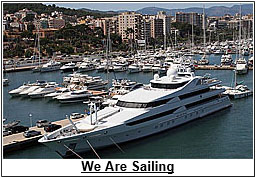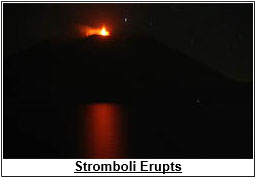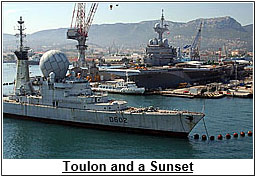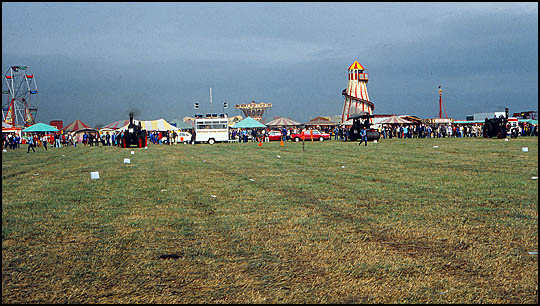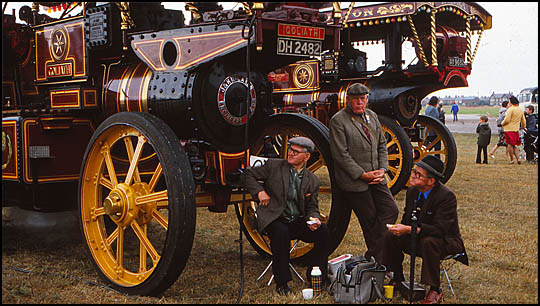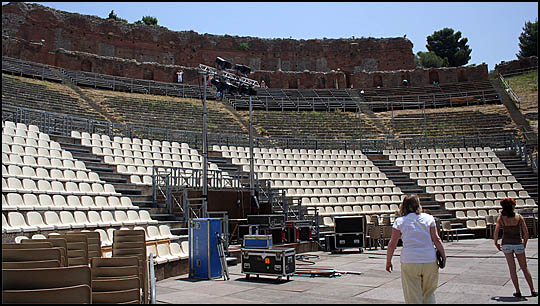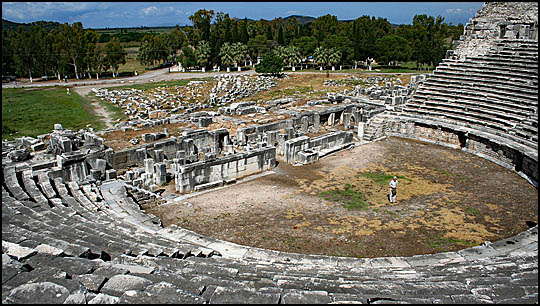Continuing my series of articles about my sketches done on holidays abroad, here is another collection spanning the years 2013-2017.

The first is of one of my favourite ports of call on the French Riviera: Villefranche. We were cruising with friends for the first time and, having walked all the way around the bay, sat in a café for a coffee with a view of the sweep of the bay.

Later in the year we took another trip, visiting Rhodes which I sketched from a high viewpoint on the ship itself. I ignored all the modern buildings but included the medieval ones.

Somehow I skipped a year in 2014 - the trips we did mustn't have had enough free time or I just didn't have the muse (now where did I put my muse...?) or whatever. So we jump to 2015 and this one was done on our second trip with David and Jeannie, from Zorba's café bar on the Greek island of Mykonos.

The girl who served us was looking at the sketch as it developed so I took her email address and emailed a scan of it once we got back, getting a thank you email in return. I did this the same afternoon on the ship, looking at the photo I had taken on the tiny screen on the back of my camera.

Sitting on a corner of the harbour at Chania on the island of Crete, I sketched this scene. We took one of the glass-bottomed boats out to see the sea life just off a nearby small island.

In 2016 we went with our daughter and son-in-law and granddaughter to Disney World in Florida and stayed in the Caribbean Beach Resort. I did a few sketches there in the all-too-brief moments of calm and relaxation. Mainly with an early morning mug of coffee on the table in front of me.

Fish could be seen swimming below me and large birds with long bills and some white storks were flying or hopping about, looking for scraps left by those who opted to eat breakfast outside.

This was another view of the resort's lake, done on our last morning between breakfast and the time we were due to catch a bus to the airport to come home. A cheerleader came jogging round and said "That's really pretty!" as she passed. Someone else came along and stared at it before saying doubtfully, "Is that bit the water?"
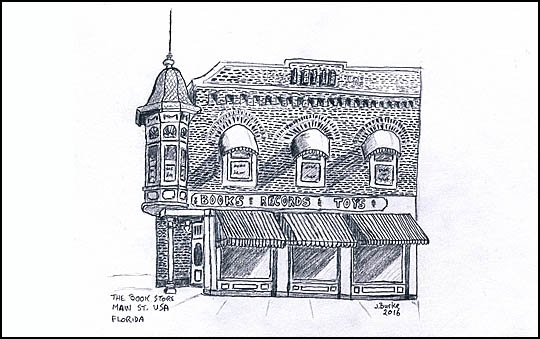
This was done as we neared the end of the two-week stay. The weather was far hotter than we were used to and with two weeks of walking all day I lost half a stone over the holiday. This day I decided to just take the chance of a half-hour's sit down and sketched one of the shops in Walt Disney World. The chap next to me kept looking but didn't say anything. He nodded though. "Does it look anything like?" I asked eventually, a bit unnerved by his silent scrutiny. He tapped his ear. "Deaf!" he whispered...

I had done one of this carousel at the time in pencil, but wasn't too happy with it. Once we got home I did this one with coloured pencils.

After the hectic nature of the Florida holiday, when we joined the Thomson Celebration cruise ship later that year I was determined to have a more relaxing holiday. We joined the ship in Corfu and I did this from the Promenade Deck on Deck 9.

It was on this cruise that we first visited Santorini. We had done four previous cruises with this fabulous island on the itinerary but never before managed to get there. It is prone to cross winds that make it dangerous for ships to enter the lagoon in the centre of this once massive island. It is in fact a volcano and blew itself almost out of existence a mere 3,600 years ago, give or take a week or two. By legend this was the famed destruction of Atlantis.

Later in the week we visited Bodrum in Turkey. Formerly known as Halicarnassus it was the site of one of the Seven Wonders of the Ancient World - the Mausoleum of Mausolus. He ruled here from 377 BCE and his tomb was so beautifully decorated that his name became synonymous for all above ground level tombs. It is not recorded how it was eventually destroyed, but by the time the Knights Templar of St John arrived in 1402 they were to record it as being in ruins. It had been standing apparently in the 1100s as it was mentioned by Eustathius in his commentary on The Iliad. Many of its stones were used in the building of the castle. The site of the mausoleum is known and can be visited - though at the time of our visit we didn't know that.

Another from that cruise in 2016. We revisited Chania in Crete and I chose a different part of the harbour to sketch.
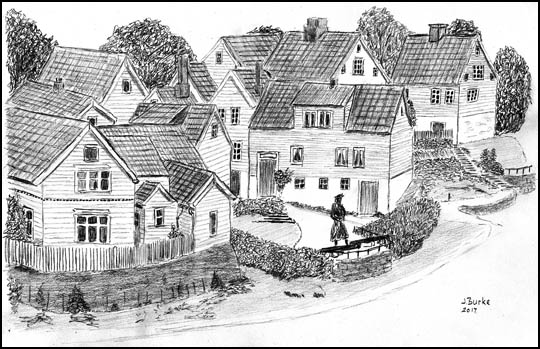
In 2017 we took a cruise on Thomson Celebration once more, sailing from Newcastle for a two-week cruise visiting Norway, Iceland, and the Faroe and Shetland Isles. This is Stavanger old town in Norway, as seen from the warmth of a lounge window on the ship. We were docked quite close!

Isafjord (Isafjordur in Icelandic) is down a fjord on the north west coast of Iceland that juts out from the corner of the mainland. This was drawn from the Celebration's coffee shop on Deck 5.

Once more in Norway, later towards the end of the cruise, this is Bergen.
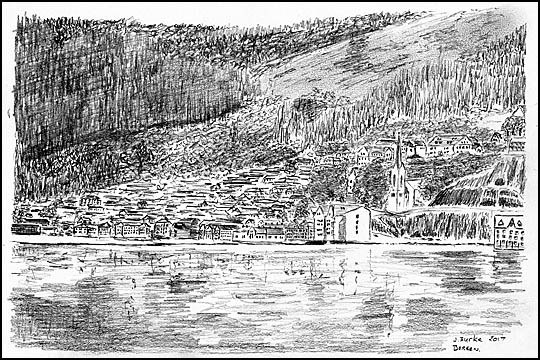
Later the same day, once again from the comfort of the ship as we waited to sail away with just one last port of call to make before sailing back down the North Sea to Newcastle.

Our second cruise in 2017 took us up the Adriatic Sea and I spent a couple of hours sitting at the far end of the port of Dubrovnik, ignoring most of the many boats and ships in the harbour, but including the Thomson Dream on which we were sailing and the Karaka a wooden sailing ship. By the time of our next cruise the following year the name Thomson would have gone and the fleet of ships rebranded as Marella.
Return to Sketching and Artwork Index

